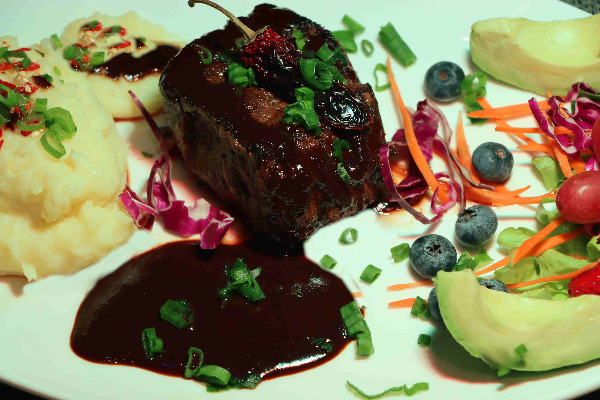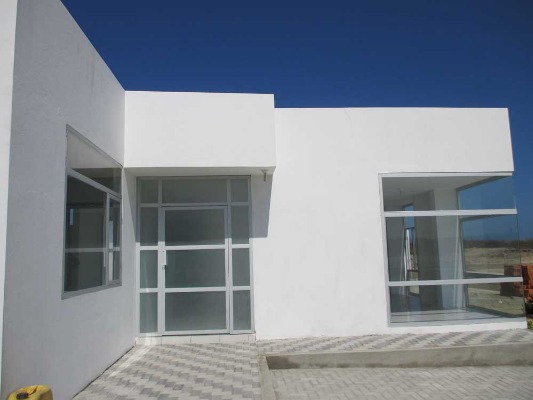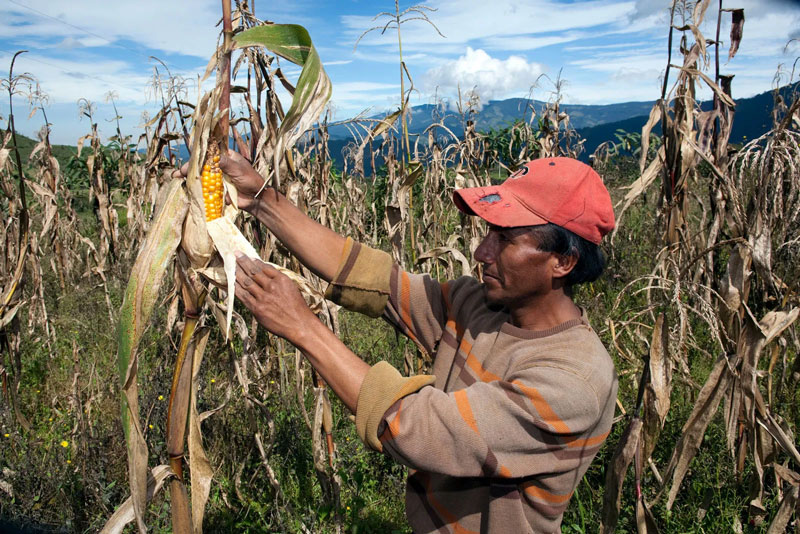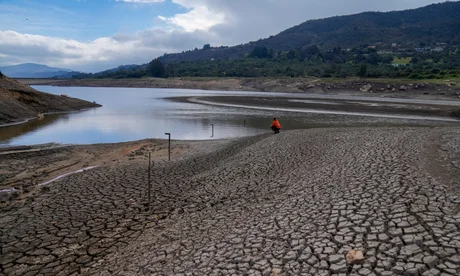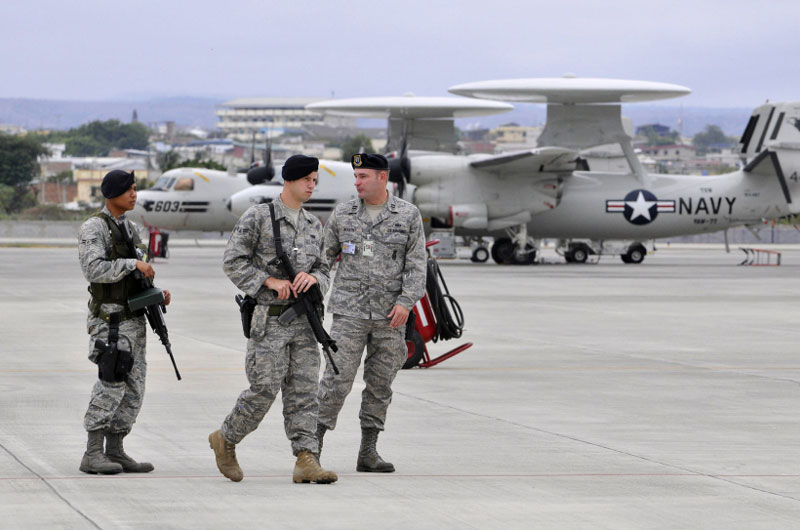Ecuador and Peru elections illustrate the political divide in Latin America and may signal trouble ahead
By Stefano Pozzebon
More than a year into the pandemic and as cases resurge in Latin America, two recent elections suggest that popular political views on how to escape the crisis remain deeply polarized — at a time when cohesion is most needed.
 South American politics are frequently interconnected, sometimes with shared political trends. Across the region, political and economic reforms are urgently needed due to the dramatic economic impact of the pandemic — which has disproportionally affected informal and low-income workers who have seen their sources of income all but disappear in the last year. But Peru’s and Ecuador’s presidential votes this weekend suggest that the road towards a national consensus in either nation is still long and complicated.
South American politics are frequently interconnected, sometimes with shared political trends. Across the region, political and economic reforms are urgently needed due to the dramatic economic impact of the pandemic — which has disproportionally affected informal and low-income workers who have seen their sources of income all but disappear in the last year. But Peru’s and Ecuador’s presidential votes this weekend suggest that the road towards a national consensus in either nation is still long and complicated.
Peru’s landscape appears split after the first round of voting. Preliminary election results indicate that voters favored candidates on the far ends of the political spectrum, including union leader Pedro Castillo, whose electoral program calls for an embrace of Marxist economic theory, and the security-focused right-winger Keiko Fujimori — the daughter of disgraced former Peruvian leader Alberto Fujimori. The two will square off in June for a second round, though the race could be complicated by the fact that Fujimori is also facing charges of corruption.
Ecuador took a turn to the right, electing a multimillionaire conservative — former banker Guillermo Lasso — after almost fourteen years of left-wing rule in the country. But his victory was also the result of another clash of extreme candidates, after facing off against hard-left economist Andres Arauz.
Lasso who had previously run in 2013 and 2017 but fell short, won this time only by 5 points, a sign of how divided the electorate was. He had promised to run a free-market, pro-investment government, which is expected to bring Ecuador closer to US interests in the region. His rival Arauz, in contrast, had promised a hike on taxes and a dispute with the IMF over a September loan to the country. Lasso was quick to say that his government intends to repay the loan in full and within four years.

A worker prepares electoral material in Lima on March 26, 2021, ahead of Peru’s presidential and general elections on April 11.
In both elections, what was mostly absent was a central figure who could win voters across the political spectrum, something that is not new in South America, a region notorious for colorful, firebrand candidates.
In other nations, the pandemic has highlighted the need for a national consensus, agreements between political forces who decide to implement measures needed to put the virus under control. One such example is Italy, where a “national unity government” has formed under the leadership of prime minister Mario Draghi and supported by almost every political force in the nation. In the US, the Biden administration has also expressed the need to work across the aisle to steer the nation in the face of the pandemic.
But a push toward unity now looks unlikely in Ecuador or Peru, a trend which could also emerge regionally. In Colombia and Brazil, where elections loom, the political center has also failed to rally around a convincing candidate.
A warning to other leftist candidates in South America
While Peru’s preliminary results have put a left-wing candidate in the pole position, Lasso’s victory in Ecuador does not look good for South America’s traditional left.
The losing candidate Arauz ran his campaign under the shadow of former president Rafael Correa, who ruled the country from 2007 to 2017 on a leftist, populist platform. The support of the former leftist leader gave Arauz a strong base — he led the first round of the elections with 31.5% 32% of the vote — but also meant only a few undecided voters turned out for him in the second round.
“This election was yet another referendum on Correa and a reflection of his polarizing legacy,” said John Polga-Heicemovich, a professor of comparative politics at the US Naval Academy who writes extensively on Ecuador.
“Many Lasso voters seem to have celebrated the defeat of correismo more than the victory of their candidate. The fact that Arauz placed third in five provinces–behind Lasso and the null vote–also reflects Correa’s divided legacy among the ideological left and poor record with the indigenous and the environment,” he said.
Arauz’s shortcoming is a warning to other South American left-leaning candidates who may try to replicate the success of the left-leaning “Pink Tide” leaders who were in power during the commodity boom of the early 2000s. That generation of leftist leaders oversaw a temporary boost to consumption due to expanded public investment but fell short of ending South America’s chronic inequality or creating structural reforms.
A series of corruption scandals in many countries in the region over the past decade have also tarnished the legacy of that period.
The gridlock to come
Overall, the political landscape remains a jumble across the region, and divided politics and recent history indicate that governability will be a challenge in both Ecuador and Peru in the next few years. Future leaders of both countries may struggle to pass legislation through their respective Congresses, at a time when the Covid-19 pandemic is reaching a new peak.
Lasso’s party, CREO, commands a small number of seats in Ecuador’s Congress, where Arauz’s party will be the biggest force. And in Peru, preliminary results suggest the new Congress will have up to 11 parliamentary groups — none commanding a majority. “The parties remain fragile,” Denisse Rodriguez-Olivari, a Peruvian political scientist at Humboldt University in Berlin, Germany, had told CNN even before the vote took place. “They are born, they grow during one election and then they die, so they are quite ephemeral.”
The threat of political gridlock could not come at a worse time for either country. Both are lagging behind in their vaccination campaigns. At current rates, it would take years before Peru and Ecuador reach herd immunity. With 170.9 deaths per 100,000 inhabitants, Peru has the worst coronavirus death rate in Latin America, according to Johns Hopkins University data, while Ecuador has the sixth highest ratio of Covid-19 deaths to cases in the world.
Their economies are in similar need of intensive care. According to the IMF, Peru’s economy suffered the most among major countries in Latin America and the Caribbean, shrinking 12% in 2020 due to the impact of the pandemic on global markets which purchase Peru’s raw material, and the tough lockdown policies imposed by the government to try to reduce the spread of the virus. Ecuador’s loan request to the IMF last year, meanwhile, is a testament to the country’s recent shortfalls in foreign income.
Other political parties in the region could learn a lesson from the results in Ecuador and Peru: a victory for Arauz, for example, would have been a boost for politicians like Luis Ignacio Lula da Silva, who’s tipped to run again for President of Brazil in 2022. The complicated scenarios that these results anticipate are also a warning for Colombia, which is also heading for elections next year and where the political scene is deeply polarized as when economic woes sharpen the need for ambitious reforms.
“Even as the Covid-19 pandemic ravages the region, there is an urgent need to consider structural reforms that will put Latin America on a long-term path of economic growth and upward social mobility,” said Gonzalo Schwarz, General Manager of the Center for Latin America at Atlas Network, a liberal think tank in Washington, DC.
“Only with a dual agenda of reforms can the region break its current cycle of economic stagnation and inequality.”
____________________
Credit: CNN









